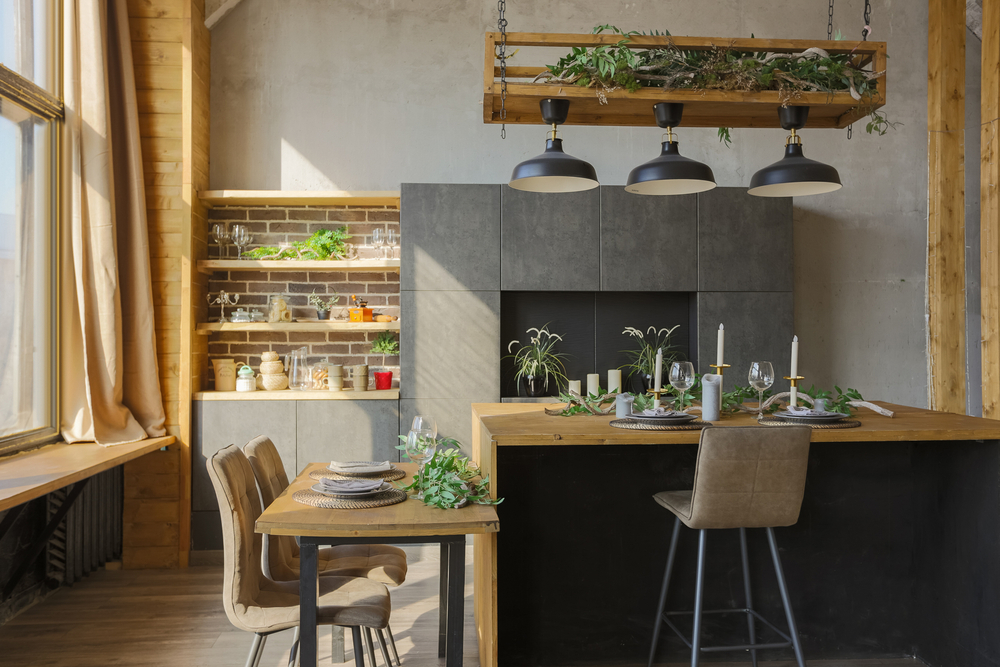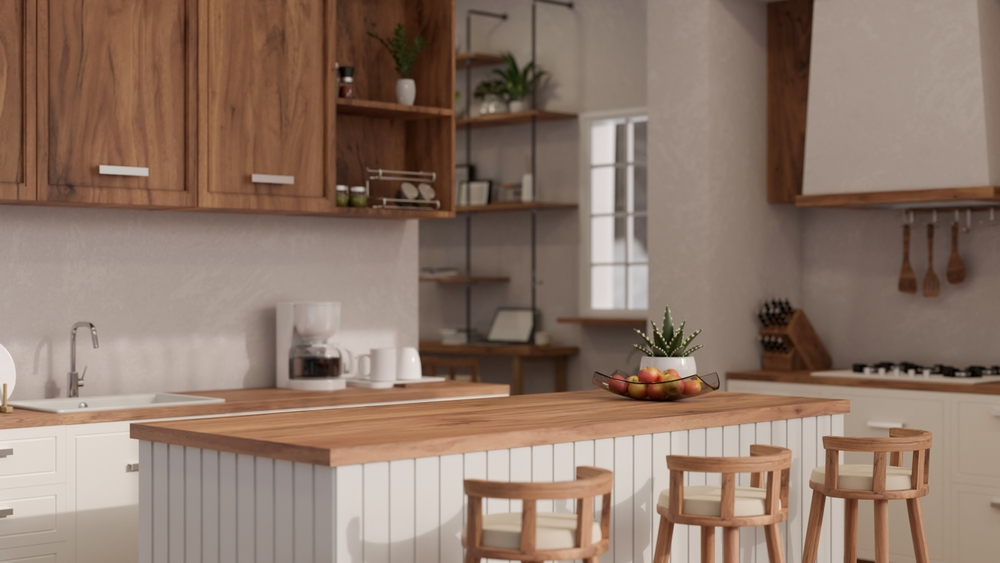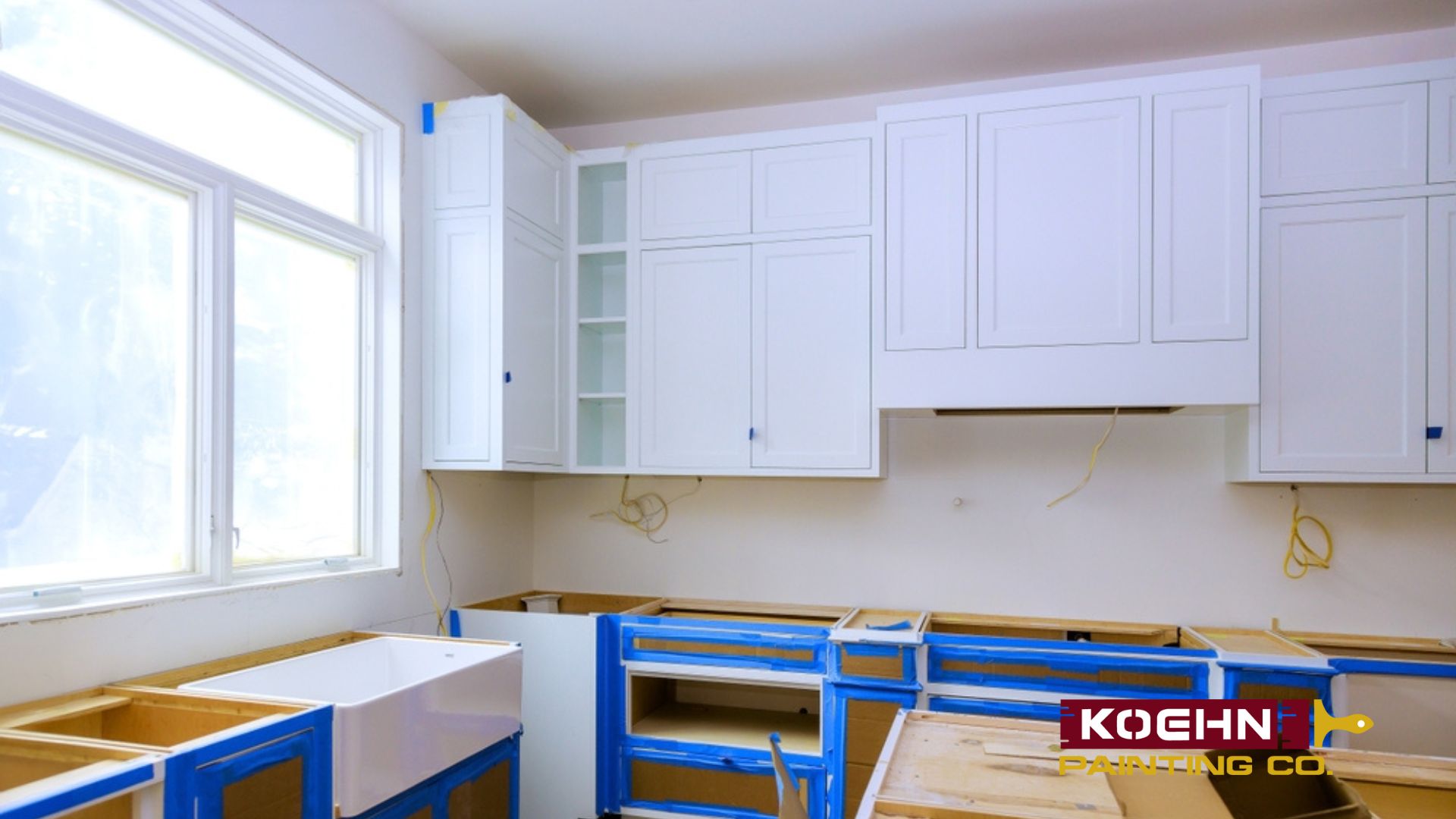Table of Contents
ToggleWalk into nearly any open house, and you’ll notice where buyers tend to linger: in the kitchen. It’s the heartbeat of the home, the place where meals are prepared, conversations happen, and first impressions are formed. In fact, more than 80% of homebuyers rank the kitchen as one of the top three most important spaces in a house. That said, many might wonder: Does remodeling a kitchen increase home value?
The answer is a bit more nuanced than you may expect. Some kitchen upgrades can add real equity and help your home sell faster, while others may cost more than they’re worth.
To better answer this question, let’s understand what today’s buyers actually care about, how much value a kitchen remodel can realistically add, and which upgrades provide the best return on investment, so you know exactly where to focus your efforts (and your budget).
Does a Kitchen Remodel Increase Home Value?
Yes, remodeling a kitchen can increase your home’s value, but by how much depends on the type and quality of the remodel. Kitchens are among the first spaces potential buyers evaluate, and they’re often a dealbreaker when outdated or poorly designed. An upgraded kitchen signals that the home is well cared for and move-in ready—two factors that can translate into higher offers and faster sales.
Buyers today expect kitchens that combine style and practicality. High-end finishes, energy-efficient appliances, and layouts that facilitate cooking and entertaining are all key selling points.
According to Ramsey Solutions, 69% of buyers would pay more for a home with new appliances, and upgraded kitchens consistently rank among the most desirable features in resale properties. Countertops—granite, quartz, or high-quality alternatives—also have broad appeal, with 55% saying they’d pay more for granite surfaces.
Updated kitchens also help homes sell faster. Homes with refreshed and modern kitchens tend to stand out in listings and get more showings, and when buyers walk in, the emotional connection forms quickly. Updated kitchens can recoup 75–85% of renovation cost at resale, and often lead to faster sales and stronger offers.
Still, expect diminishing returns if you over-invest. Luxury finishes are tempting, but if they surpass neighborhood standards, they won’t always lead to a higher sale price. Even simple updates, like refinishing cabinets or updating lighting, can be more effective than going overboard.
Key factors that influence value gains include:
- Local comparables: If surrounding homes didn’t have luxury kitchens, you may not recoup every dollar in upgrades.
- Market dynamics: In hot seller markets, a remodeled kitchen may spark competition. In softer markets, it still helps your home stand out, but fewer buyers may be willing to pay a premium.
- Quality of upgrades: Cost-effective, universally appealing touches (such as neutral paint, solid hardware, and efficient appliances) often yield better returns than over-customized styles.
A kitchen that’s clean, modern, and thoughtfully updated increases your home’s appeal and makes buyers feel more comfortable. Remodels that focus on universal design, clean finishes, and updated appliances tend to deliver most of the benefit without overshooting your neighborhood’s expectations.
When executed well, kitchen updates help you sell faster, differentiate your listing, and command a stronger offer, even if they don’t fully recoup the total cost.
How Much Value Does a Kitchen Remodel Add?

So, how much value does a kitchen remodel add? Industry data shows a clear pattern: smaller, strategic upgrades often punch above their weight. Here’s what typical projects add to resale value:
- Minor kitchen remodel: $26,000 added value, about 85–96% of costs recouped. Minor updates (surfaces, hardware, lighting, and modest appliance swaps) tend to recover the most because the upfront spend stays lean.
- Midrange kitchen remodel: $39,000 added value, 42–50% cost recovery on average. These projects often include new flooring, full cabinet replacements, and a partial layout tweak.
- Upscale kitchen remodel: $60,000 added value, 31–38% cost recovery. Think custom cabinetry, professional-grade appliances, and premium finishes—high impact, higher spend, lower percentage return.
Why do minor projects often succeed? Because they have lower initial costs combined with a strong buyer perception of being “new, fresh, move‑in ready.” This gap explains why modest makeovers frequently outperform larger, luxury overhauls on a percentage basis. It’s also crucial to reinforce that buyers prefer updated kitchens, which help homes sell faster—another reason even lighter upgrades can significantly improve marketability.
Which Kitchen Renovations Add the Most Value?
When every dollar counts, you want to focus on the kitchen updates that buyers notice first and that deliver the biggest impact. Certain elements consistently drive perceived value and help your home stand out in a competitive market.
- Cabinets (refresh vs. replace): Cabinets are visual real estate. In many cases, paint/refacing delivers a modern look without custom‑cabinet pricing; full replacements can elevate both function and perceived quality when boxes are failing or layouts are dated. Cabinets are among the four elements with the strongest returns.
- Countertops & backsplashes: Durable, attractive counters (granite/quartz) and a cohesive backsplash unify the room and signal “updated.” There is a strong buyer appetite for quality counters.
- Appliances: Energy‑efficient, modern appliances read as move‑in ready. Many professionals emphasize the appeal and marketability of an updated package.
- Flooring: Hardwearing, easy‑to‑clean floors (hardwood or quality alternatives) increase day‑to‑day usability and value perception.
- Functional upgrades: Better lighting, storage, and workable prep zones often matter more than purely decorative upgrades and can lift buyer confidence across price points. Functionality is a major value driver.
Which Renovations Add the Least Value?
Not every upgrade will help your bottom line. Some choices may look impressive but won’t translate into higher offers, especially if they push your kitchen too far outside the norms for your neighborhood.
- Over-personalization: Bold, highly specific tile patterns, niche color combos, or specialized appliances narrow your buyer pool and may reduce value. Be cautious against over‑customization.
- Non‑essential luxury splurges: Top‑tier brands or exotic materials that don’t align with the overall home price rarely pay you back proportionally.
- Over‑improving beyond neighborhood standards: Going far above local comps often limits what you’ll see at resale. Think about the importance of fitting the market.
The key takeaway is to stick to upgrades that enhance functionality and appeal to a wide audience while avoiding the temptation to overspend on highly customized or ultra-luxury features.
Contact us here if you would like to find the best painting contractor for your residential or commercial painting needs.
ROI on Kitchen Remodel: What to Expect

If you’ve been wondering, “Is upgrading your kitchen a good investment?” or “Is it worth remodeling a kitchen before selling?”, understanding ROI is the first step.
ROI—short for return on investment—measures how much of your remodeling costs you can expect to recoup when you sell your home. Put simply, it’s a way to answer the question: does remodeling a kitchen increase home value enough to justify the spend?
The kitchen typically delivers one of the highest ROIs of any home improvement project. Compared to bathrooms, windows, or other upgrades, kitchens often make a bigger impression on buyers and can help a home sell faster.
According to data, minor kitchen remodels can recoup 85–96% of their costs, outperforming most other projects. Major midrange remodels average about 42–50% ROI, while upscale remodels generally recover 31–38%.
To better understand this, let’s take a look at what factors influence ROI on kitchen remodel:
- Location: Your market matters. For example, mountain states see some of the highest returns—up to 90% ROI for minor kitchen remodels. Urban markets with older housing stock may also respond better to thoughtful upgrades, while overspending in a rural or lower-priced area can backfire.
- Cost management: One rule of thumb is to keep your kitchen remodel budget within 10–15% of your home’s total value. Spending significantly more can make it difficult to recoup costs, especially if your kitchen ends up pricing your home out of the neighborhood.
- Market timing: Remodeling before listing can absolutely help your home stand out, but it doesn’t guarantee a dollar-for-dollar return. If market conditions soften, even a beautifully remodeled kitchen may not deliver 100% ROI.
Intangible returns
ROI isn’t just about dollars. Kitchen remodels often lead to faster sales, stronger offers, and better buyer perception, especially when the upgrades feel move-in ready. And if you’re planning to stay in the home, there’s another layer of return: better day-to-day function and enjoyment. Cooking in a well-laid-out kitchen or entertaining in a space you’re proud of adds real lifestyle value.
The National Association of REALTORS® Remodeling Impact Report tracks homeowners’ post‑project satisfaction via a “Joy Score,” documenting increased happiness and satisfaction after renovations—kitchen projects are consistently among the highest, supporting the claim that a remodel improves everyday living.
Also, this year, NAR’s Profile of Home Staging found that staging (a proxy for “move‑in ready”) reduces time on market and can increase offers—consistent with how updated kitchens influence buyer behavior.
Final tips to maximize your ROI on a kitchen remodel
If you’re focused on how much value does a kitchen remodel add, start by targeting updates that buyers notice most:
- Prioritize appliances, cabinets, and flooring: These big-ticket items anchor the room’s look and feel and influence buyer perception.
- Avoid overspending on custom work: Ultra-specific designs and top-tier brands may not increase value proportionally and can even narrow your buyer pool.
- Set aside 10–15% for unexpected costs: Remodeling projects often uncover surprises—budgeting for them upfront helps you stay on track.
When planned strategically, ROI on kitchen remodel projects tends to be higher than most other home upgrades. Minor to midrange remodels that focus on broad appeal typically deliver the best returns.
Does Remodeling a Kitchen Increase Home Value?

So, does remodeling a kitchen increase home value? The evidence is clear: yes, but how much it moves the needle depends on your approach.
Kitchens consistently rank among the top three spaces buyers care about most, and updates in this area can dramatically improve your home’s appeal.
Minor remodels often deliver the strongest return because they refresh what buyers see and use every day—without over-investing in features that may not translate to a higher sale price. But high-impact upgrades like updated appliances, refreshed cabinets, quality countertops, and improved functionality help homes stand out and sell faster.
Done right, a kitchen remodel can add tangible equity while making your home feel more modern and move‑in ready to buyers.
Before starting, think carefully about your goals and your home’s market position. A professional remodeler, like Koehn, can help you plan strategically, avoid costly mistakes, and create a kitchen that balances design, function, and ROI.
Discover the Koehn Painting difference – contact us today for a free estimate and step into a vibrant, freshly renovated home!




